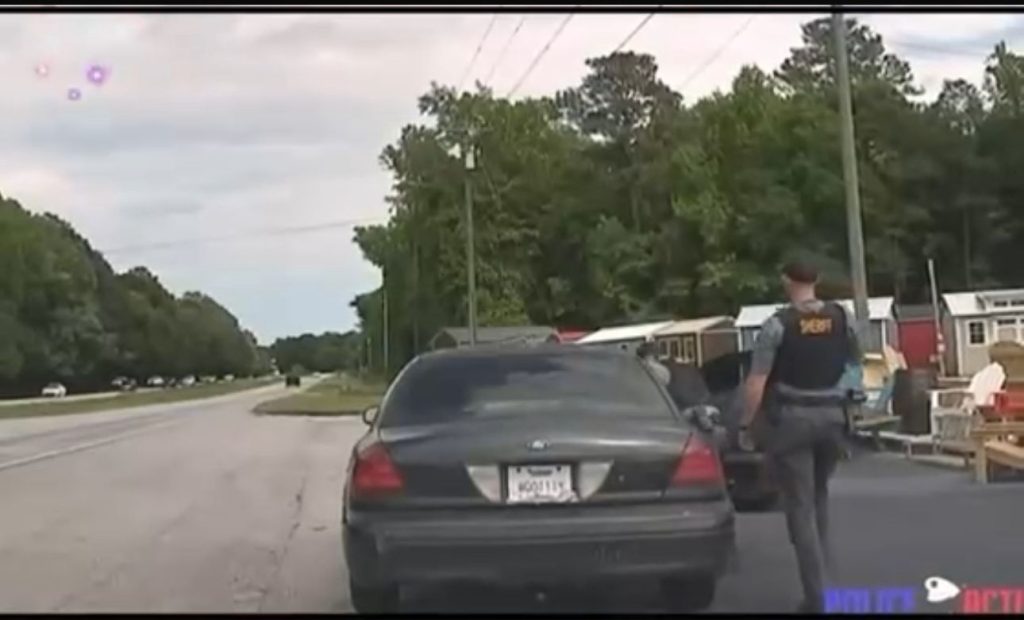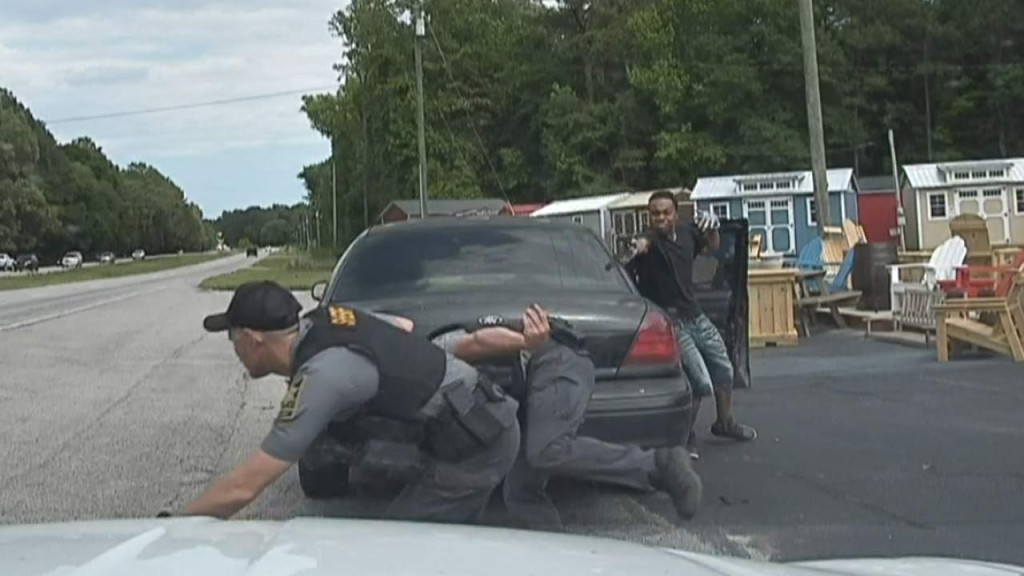Beandri Booysen: Girl in South Africa with progeria dies

Beandri Booysen’s life was a testament to resilience, love, and the power of positivity. Despite facing a rare and heartbreaking illness, she radiated joy that touched thousands of lives. Now, tragically, her journey has come to an end—just days before Christmas.
Beandri passed away at just 19 years old, but her story will continue to inspire those who hear it.
Born in South Africa, Beandri was only seven months old when she was diagnosed with Hutchinson-Gilford Progeria Syndrome, an incredibly rare genetic condition that causes the body to age eight times faster than normal.

The odds of being born with progeria are 1 in 4 million, and fewer than 400 children and young adults worldwide currently live with the condition. Doctors didn’t expect Beandri to survive beyond her early teens. But Beandri had other plans.
A life lived to the fullest
From the moment she could speak, Beandri refused to let her condition define her. She weighed just 12 kilograms (26 pounds) and bore the physical toll of the disease, but her spirit was limitless.
She attended school, dreamed of becoming a teacher, and even imagined a future where she’d marry and raise twins. She was determined to live like any other teenager, cherishing every moment.

On social media, Beandri found her voice. Her TikTok account, where she posted motivational videos and candid glimpses into her life, quickly gained nearly 300,000 followers.
Her motto,
A mother’s heartbreak
Just weeks after celebrating her 19th birthday, Booysen faced a sudden health crisis.
”Please pray. Beandri’s heart stopped,” her mother, Bea, shared on Wednesday. “They are trying to get her heart to beat again. Please pray.”
On December 18, Beandri’s mother shared that her daughter had died.
Her message, filled with both sorrow and pride, described Beandri as a “vibrant personality” and the “last surviving person in South Africa with progeria.”
“She was a voice and a symbol of awareness for Progeria and other special needs,” Bea wrote. “She never stopped fighting.”
Tributes quickly began flooding TikTok as news of her passing spread.
”Rest In Peace my sweetheart friend. I will miss you alot,” person shared.
Many others expressed their heartbreak, offering heartfelt condolences to Beandri’s family and loved ones.
Her lasting, final message
Beandri’s life was far too short, but she used her time on this earth to remind us all of what truly matters. She taught us to live fully, to love fiercely, and to appreciate the beauty in every day. Her infectious laugh, her fearless optimism, and her determination to help others will never be forgotten.
Although her family has asked for privacy during this difficult time, one thing is certain: Beandri’s light will continue to shine through the many lives she touched.
As we hold her story close, let it be a reminder to treasure the moments we have and to live with the same bravery and joy that Beandri did every single day.

Gang Leader Opens Fire, Injures Charleston Deputy During Routine Stop

Shadows on the Highway: Charleston Deputy Shot in Violent Clash with Gang Leader
What started as an unremarkable traffic stop on the dimly lit roads of Charleston transformed within minutes into a harrowing display of violence, shaking the city to its core.
On the surface, it seemed to be another late-night encounter between law enforcement and a suspected offender. But as the gunfire echoed and details emerged, it became clear that this was no ordinary stop. Behind the wheel was not just a nervous driver but a gang leader whose name has long lingered in law enforcement files—an individual whose presence suggested a web of crime larger than one roadside confrontation.
Whispers within the community now paint the moment as more than chance. Some claim that the suspect had been circling the area, waiting for the right moment to strike.
Others believe the shooting was not spontaneous, but deliberate—a brazen attempt to send a message to Charleston’s authorities that the underworld would not bow quietly. Whether panic or premeditation, what happened that night left both residents and officers facing unsettling questions about the true reach of organized crime in their city.
The Deadly Turn of a Routine Stop

According to official reports, the deputy, whose identity remains shielded for privacy and safety reasons, initiated the stop after identifying a vehicle linked to suspicious movements. The stretch of road was quiet, the kind of place where officers expect compliance rather than conflict. But instead of cooperation, the deputy was met with sudden hostility.
In a matter of seconds, the driver allegedly drew a firearm, opening fire before the deputy could fully react. The roadside quiet shattered into chaos as bullets tore through the air, turning what should have been a controlled encounter into a fight for survival.
The deputy was struck multiple times. Still, through grit and training, he managed to signal for backup before collapsing. Emergency services rushed him to a nearby hospital, where doctors confirmed that his condition, though critical, had stabilized after emergency treatment. His survival, many have said, was nothing short of miraculous.
The Suspect Behind the Trigger
The gunman was no stranger to Charleston’s law enforcement circles. Identified as a gang leader with deep ties to the Gudda Boy Gang (GBG), his record was stacked with prior arrests, ranging from drug trafficking and firearm offenses to suspected involvement in orchestrated criminal networks.
For investigators, the shooting was not simply an act of resistance—it was the culmination of years of escalating defiance. His choice to fire on a deputy, some experts suggest, may have been fueled not only by the fear of imprisonment but by a need to demonstrate loyalty and dominance within his criminal circle.

The attack triggered an immediate, large-scale response. Local police, supported by state troopers and federal agents, launched a coordinated manhunt. Roads were blocked, helicopters swept over darkened neighborhoods, and tactical units combed through potential hideouts. After hours of tension, the man was cornered, leading to a standoff that ended with his arrest.
Shockwaves Through Charleston
The news of the deputy’s shooting spread swiftly through Charleston, igniting both fear and unity. Residents who had once viewed gang violence as a distant threat suddenly felt it encroaching on their quiet communities. Vigils were held outside the hospital, where citizens gathered with candles and prayers, offering support to the wounded deputy and his family.
Local leaders spoke with urgency, condemning the act not just as a crime, but as a brazen attack on the very institution of law and order. “This was not just a deputy under fire,” one official stated, “this was Charleston under fire.”
The sheriff’s office echoed those words, calling the shooting a calculated affront to justice itself. For many officers, it was a bitter reminder of the fragility of safety during tasks as seemingly simple as a traffic stop.
The Rising Shadow of Gang Activity
This incident reignited simmering debates about gang presence across South Carolina. For years, officials have warned about networks like the GBG gaining traction, weaving their influence through drug trades, weapons circulation, and intimidation. The Charleston shooting, violent and public, appeared to validate those warnings.
Experts in criminal justice are now pressing for stronger intelligence-sharing systems, tougher sentencing policies for repeat offenders, and renewed cooperation between community leaders and police. The fear is clear: if such a violent act can erupt during a simple traffic stop, what might happen in more populated areas, where collateral damage could devastate innocent lives?
Moving Forward
As the wounded deputy continues to recover under close medical care, Charleston is left balancing two truths: the fragility of order in the face of crime, and the resilience of a community unwilling to be cowed. Public officials have promised not only justice but reform—greater vigilance, more aggressive targeting of gang activity, and renewed investment in officer safety.
For many, the night of the shooting will linger as a warning that no officer’s duty is ever “routine.” Every stop carries the potential to erupt into violence, every encounter the risk of tragedy. Yet it also stands as a testament to the courage of those who step forward daily into that uncertainty, prepared to face the unknown in defense of their communities.
Conclusion: More Than a Shooting, a Reckoning
The Charleston traffic stop that escalated into gunfire will be remembered not simply as another crime report but as a turning point—one that exposed the raw dangers of gang violence and the thin line separating peace from chaos. It showed how quickly shadows can rise from the edges of society to strike at those sworn to uphold the law.
But it also revealed something stronger: the resolve of law enforcement, the unity of a shaken yet determined community, and the resilience of a deputy who fought for his life and lived to tell the story.
In Charleston, the message is clear. Violence may attempt to silence, but justice—and the people who stand for it—will not yield.





